 Technology peripherals
Technology peripherals
 AI
AI
 Discuss the scientific explanation of ddl as the primary productive force: Netizens call for large-scale model experiments
Discuss the scientific explanation of ddl as the primary productive force: Netizens call for large-scale model experiments
Discuss the scientific explanation of ddl as the primary productive force: Netizens call for large-scale model experiments
It’s the end of the year, college students are in final week, and workers are rushing to catch up on KPIs. The end of the year without deadline (ddl) is not the real end of the year...
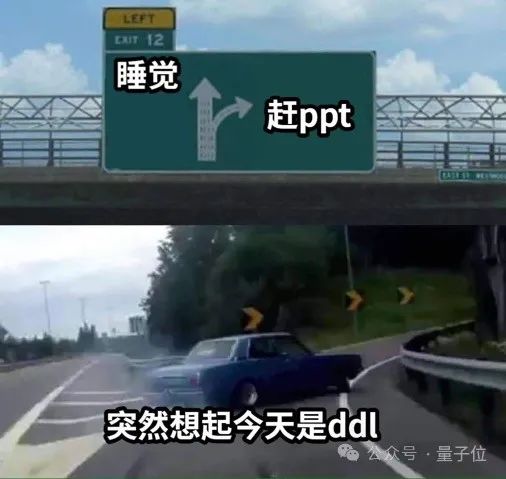
ddl is ubiquitous in our daily life, and "ddl is the primary productive force" is a "wise saying" that people have learned through personal practice.

#However, systematic evidence on the behavioral effects of ddl is rare.
However, a study on ddl was published in the journal "Management Science" of INFORMS, one of the largest professional associations in the field of operations research and management science.
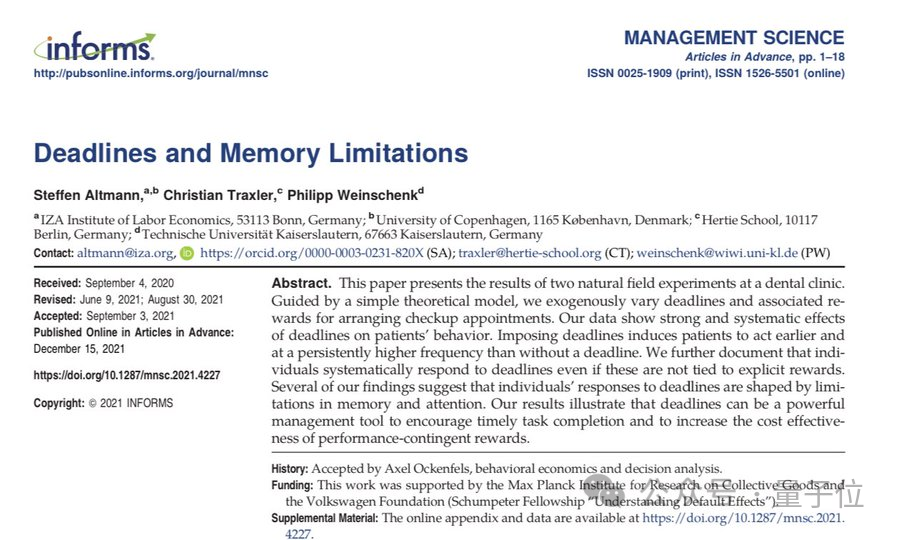
This study confirms the effectiveness of DDL through two experiments and explains why it is a powerful management tool. At the same time, research also reveals that individual responses to DDL are affected by memory and attention limitations.
Some scholars commented:
The reason why understanding different coordination methods is valuable is that they fully take into account human cognitive limitations. This is an interesting topic.
In the future, our interaction design with AI will focus on making up for the limitations of human psychology. It is obvious that current chat interfaces are imperfect because they incorrectly assume that humans can process and remember the same magnitude of contextual information as LLMs.
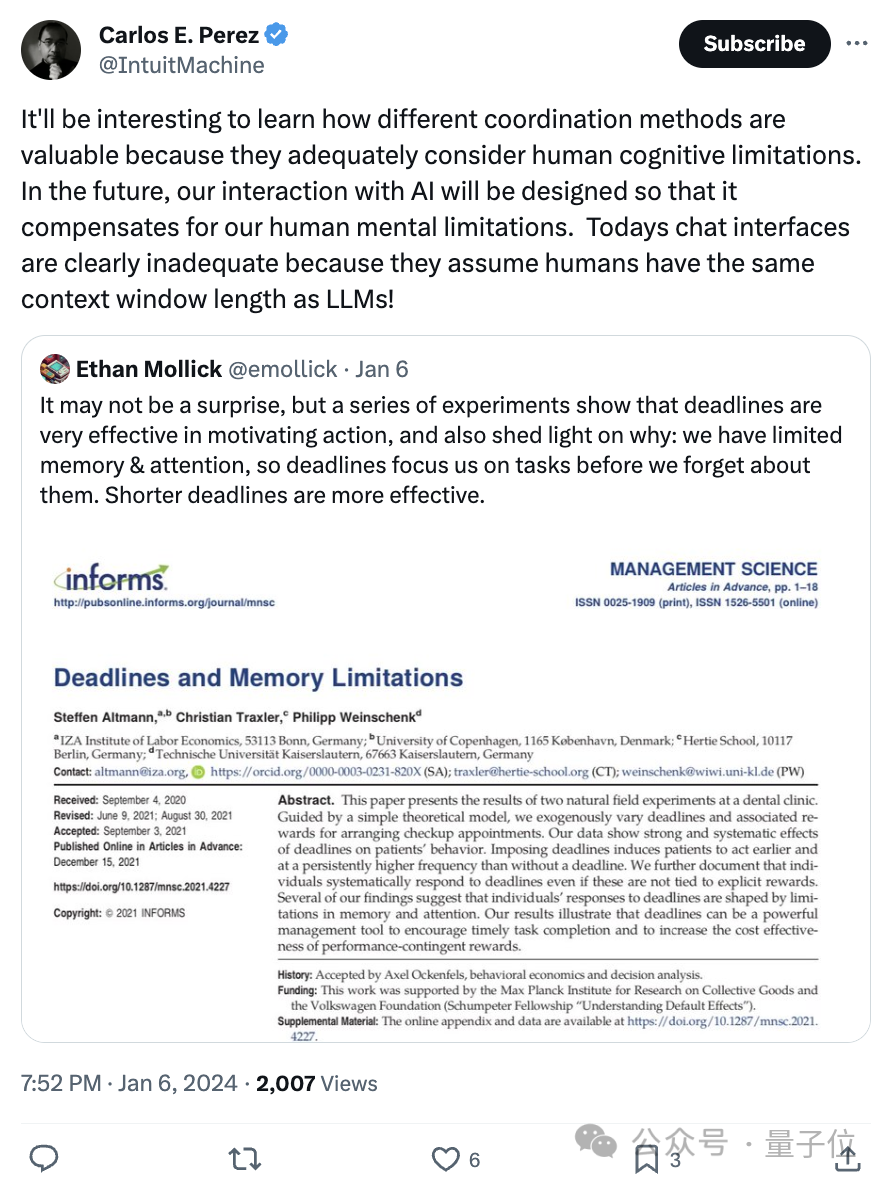
Netizens are also very excited, "Will setting ddl on a large model improve its performance?":

Archaeological "ddl effective" experiment
This study was jointly completed by researchers from the IZA Bonn Institute in Germany, the University of Copenhagen, Hertie College, and the University of Kaiserslautern.
They conducted two experiments at a large dental clinic, targeting patients who needed preventive check-ups. This scenario was chosen for the experiment mainly because of the following considerations:
According to doctor's orders, patients should take the initiative to contact the dentist regularly and make appointments for examinations (the frequency of examinations is relatively low), that is, people need to take the initiative to complete the task , but there is no clear execution date. This setting is particularly suitable for exploring the interaction between DDL, task performance, and memory constraints.
Specifically, the first experiment spanned 2011-2013.
The dental clinic's examination appointment notification system will send a postcard-style reminder notice to the patient according to the patient's recommended examination time interval to remind them to make an appointment for the next routine examination.
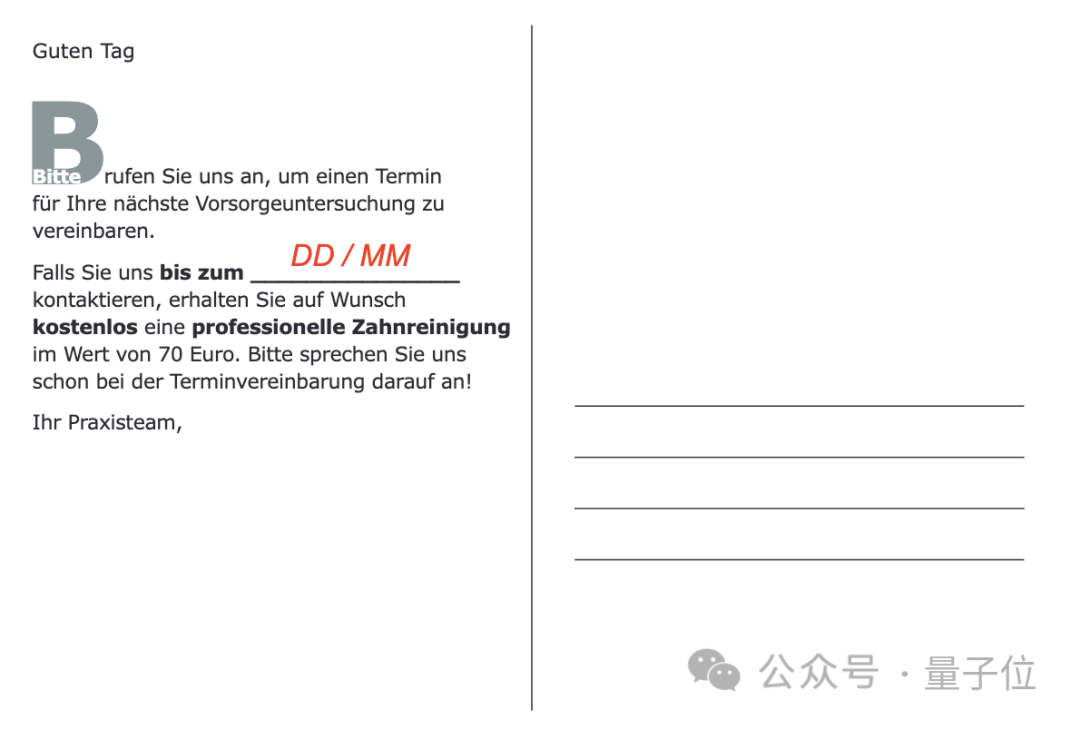
On this basis, the researchers added ddl to the reminder notification, corresponding to three treatment groups: D1 (1 week ddl), D3 (3 weeks ddl) , ND (no ddl) . Three reward levels are also set up in each treatment group: large reward (free professional tooth cleaning) , small reward (dental care package) , and no clear reward.
This forms 9 combinations of 3 ddl × 3 reward levels.
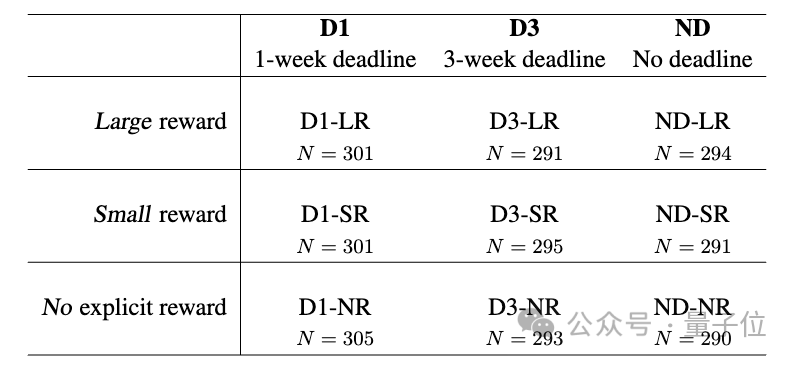
A total of 1,175 patients were tested, coming from 1,015 families, resulting in a total of 2,661 treatments. Researchers randomly assigned patients to different treatment groups in 43 batches from 2011 to 2013.
The analysis result variables are mainly the date of the patient's first contact appointment, cumulative response rate, response rate within ddl, and daily risk rate (Hazard Rate) .
In the second and third quarters of 2013, the researchers set up a second experiment in the same environment, mainly to explore whether the key findings were stable under longer DDL.
As a control, in addition to the treatments corresponding to D1, D3 and ND in the main experiment, the second experiment also included a 6-week (D6), 10-week (D10) and 12-month period. "Year-end" (EoY) ddl processing on the 31st. The prize is a dental care kit worth €10.

Other design and analysis procedures were similar to the first experiment.
The power of ddl
In the end, the researchers analyzed the experimental results. The analysis process was a bit complicated. Interested family members can view the complete paper. The "saving version" is as follows.
- Setting up DDL can significantly improve and speed up the frequency and time with which people respond to tasks.

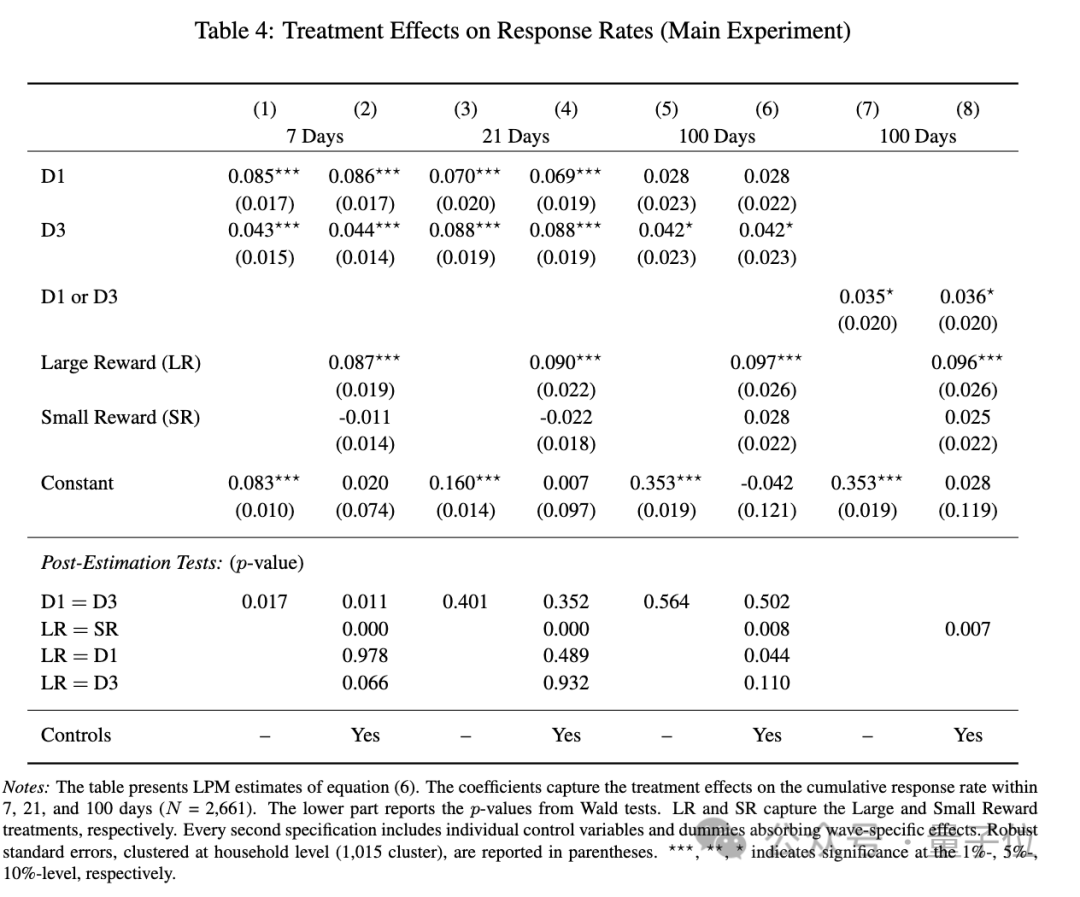
- Relatively short ddl (1-3 weeks) not only speeds up people’s reactions , can also continue to increase the response rate by more than 10% within 100 days after ddl, continue to improve people's task completion rate for a longer period of time, which may be related to memory and attention limitations.
- Even without clear incentives, ddl has a significant impact on people's behavior. The effect of ddl itself is similar to that of high rewards.
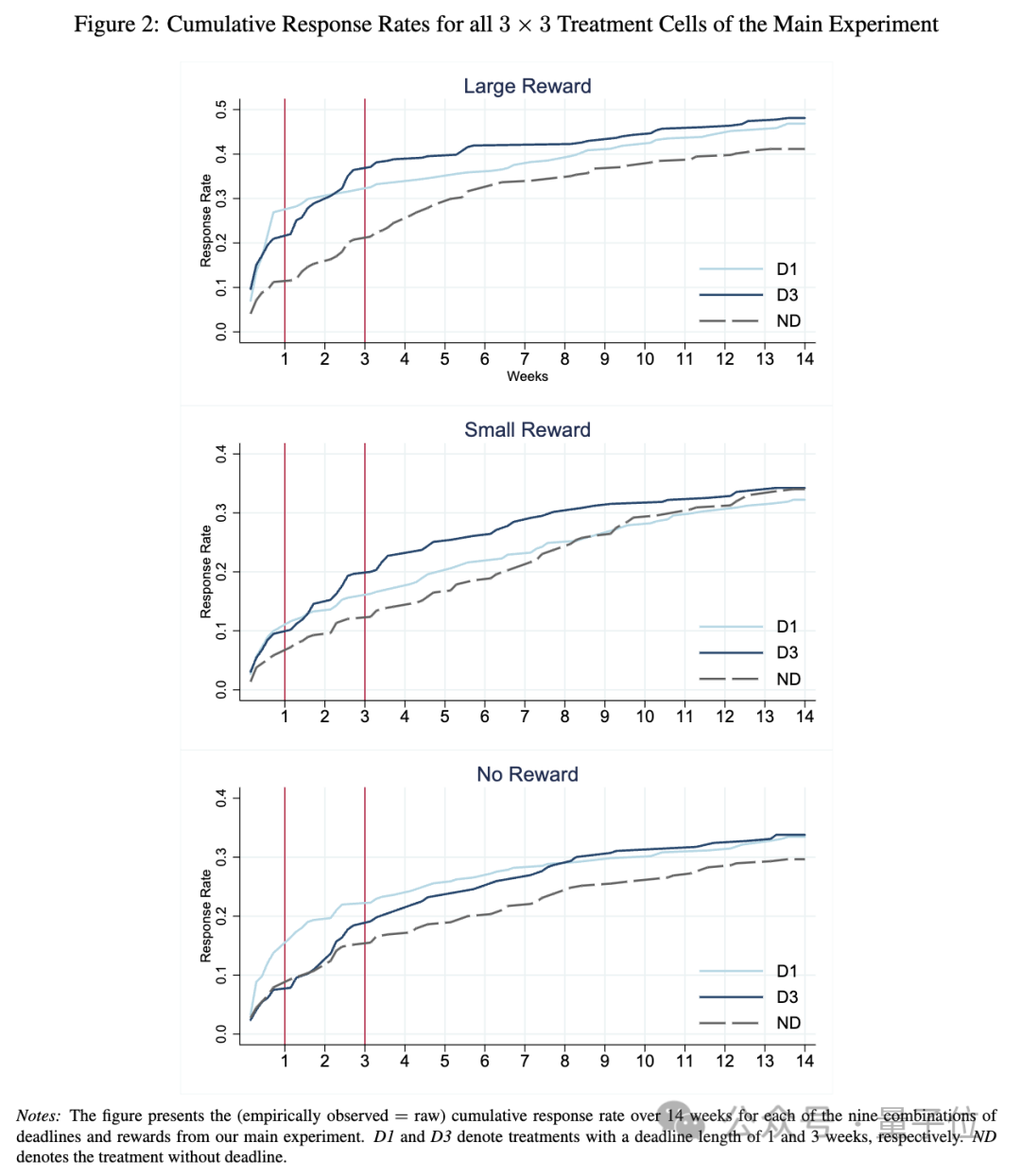
- Before a given ddl, the risk rate decreases with the extension of ddl, which is inconsistent with theoretical predictions and may also be the effect of memory limitations. .
That is, the ddl is long, and people may forget the tasks to be completed before, resulting in a relatively low risk rate.
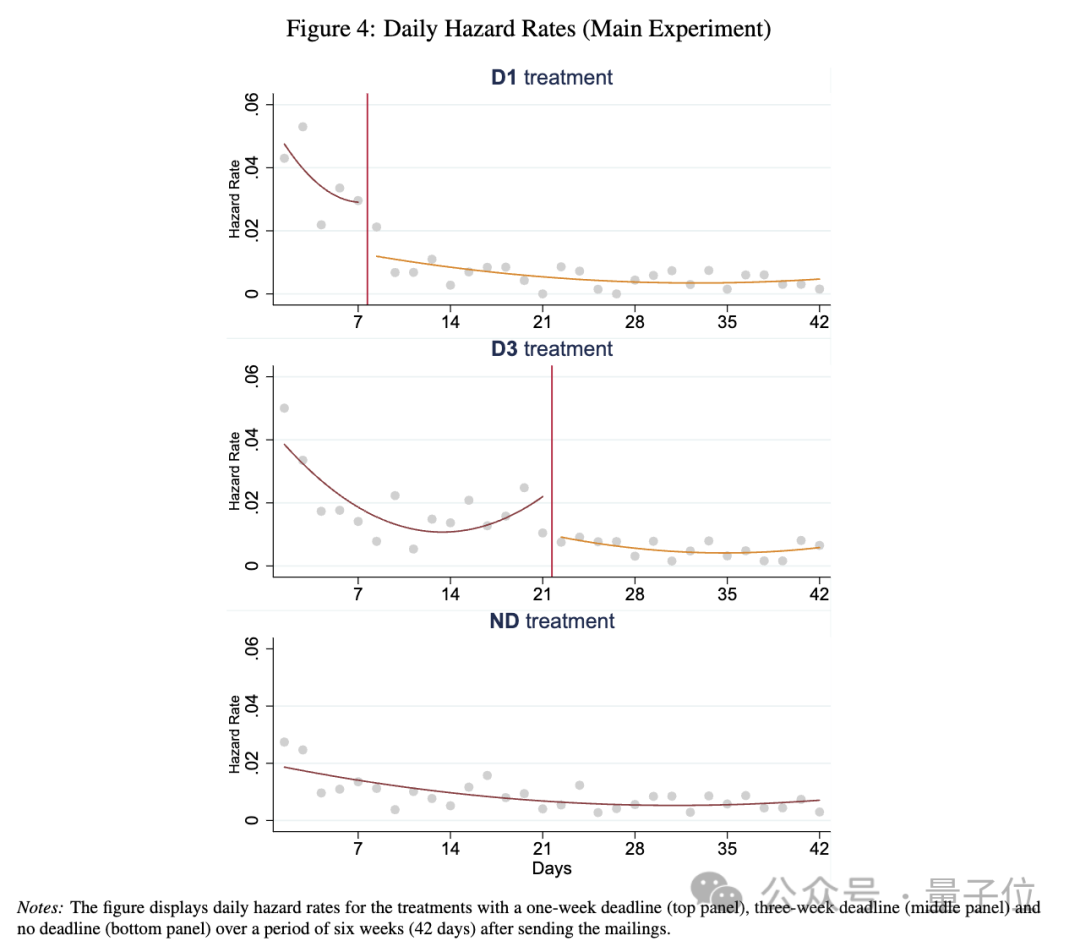
- Combining rewards with reasonable short-term DDL can motivate people to complete tasks early at a lower total cost, which is the most cost-effective .
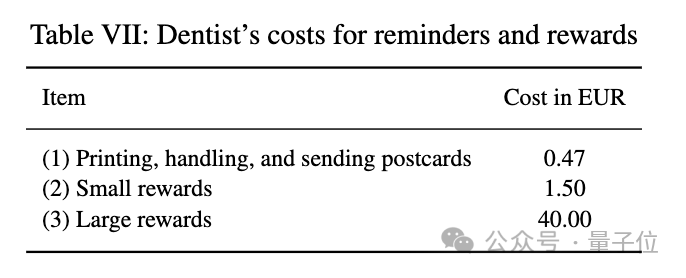
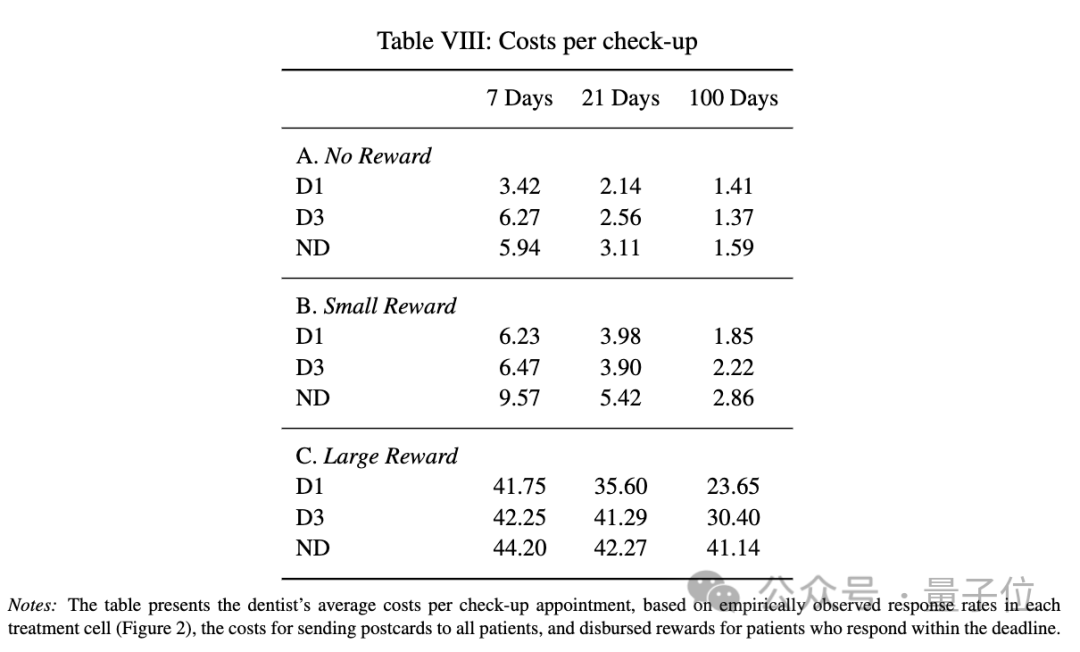
- Imposing ddl on one task may have negative spillover effects on other tasks.
- In the group with a lower response rate in the no-ddl setting, the relative improvement in task performance was greater after the application of ddl.
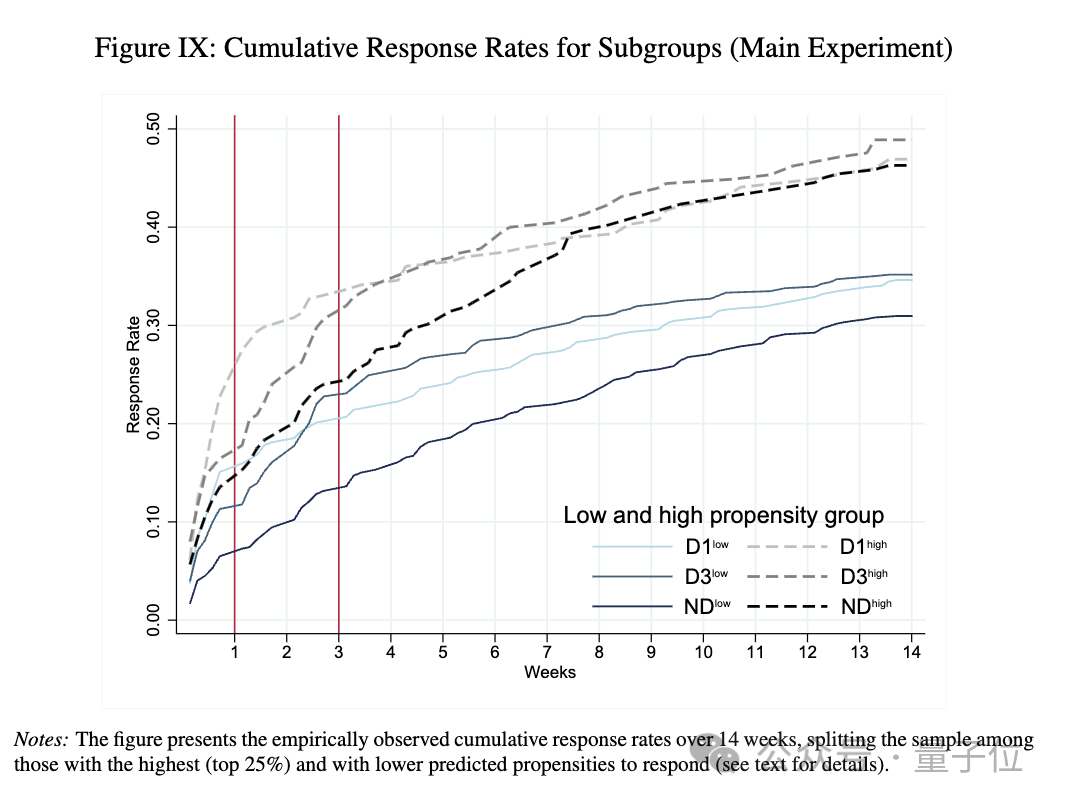
Hot discussion among netizens
After Wharton Business School professor Ethan Mollick uncovered and shared this research, it attracted the attention of many netizens.

Some netizens said, "This echoes Parkinson's law" (work will expand to fill the time used to complete the work) :
Shorter DDLs add a sense of urgency, but also greater peace of mind, knowing there is still time to correct errors or remedy problems before the DDL comes.

Starting from research, some netizens are also interested in the long-term impact of ddl on psychology and the impact of work quality:
ddl Essentially just a time frame that sets the scope and depth of analysis that can be performed to complete the task. However, people often view the pressure of facing ddl as a punishment.

In addition, some netizens complained about ddl:
Are you sure this is not because the prisoners are used to the iron bars of the prison? I work better without ddl.

The above is the detailed content of Discuss the scientific explanation of ddl as the primary productive force: Netizens call for large-scale model experiments. For more information, please follow other related articles on the PHP Chinese website!

Hot AI Tools

Undresser.AI Undress
AI-powered app for creating realistic nude photos

AI Clothes Remover
Online AI tool for removing clothes from photos.

Undress AI Tool
Undress images for free

Clothoff.io
AI clothes remover

AI Hentai Generator
Generate AI Hentai for free.

Hot Article

Hot Tools

Notepad++7.3.1
Easy-to-use and free code editor

SublimeText3 Chinese version
Chinese version, very easy to use

Zend Studio 13.0.1
Powerful PHP integrated development environment

Dreamweaver CS6
Visual web development tools

SublimeText3 Mac version
God-level code editing software (SublimeText3)

Hot Topics
 1386
1386
 52
52
 How to check CentOS HDFS configuration
Apr 14, 2025 pm 07:21 PM
How to check CentOS HDFS configuration
Apr 14, 2025 pm 07:21 PM
Complete Guide to Checking HDFS Configuration in CentOS Systems This article will guide you how to effectively check the configuration and running status of HDFS on CentOS systems. The following steps will help you fully understand the setup and operation of HDFS. Verify Hadoop environment variable: First, make sure the Hadoop environment variable is set correctly. In the terminal, execute the following command to verify that Hadoop is installed and configured correctly: hadoopversion Check HDFS configuration file: The core configuration file of HDFS is located in the /etc/hadoop/conf/ directory, where core-site.xml and hdfs-site.xml are crucial. use
 Centos shutdown command line
Apr 14, 2025 pm 09:12 PM
Centos shutdown command line
Apr 14, 2025 pm 09:12 PM
The CentOS shutdown command is shutdown, and the syntax is shutdown [Options] Time [Information]. Options include: -h Stop the system immediately; -P Turn off the power after shutdown; -r restart; -t Waiting time. Times can be specified as immediate (now), minutes ( minutes), or a specific time (hh:mm). Added information can be displayed in system messages.
 What are the backup methods for GitLab on CentOS
Apr 14, 2025 pm 05:33 PM
What are the backup methods for GitLab on CentOS
Apr 14, 2025 pm 05:33 PM
Backup and Recovery Policy of GitLab under CentOS System In order to ensure data security and recoverability, GitLab on CentOS provides a variety of backup methods. This article will introduce several common backup methods, configuration parameters and recovery processes in detail to help you establish a complete GitLab backup and recovery strategy. 1. Manual backup Use the gitlab-rakegitlab:backup:create command to execute manual backup. This command backs up key information such as GitLab repository, database, users, user groups, keys, and permissions. The default backup file is stored in the /var/opt/gitlab/backups directory. You can modify /etc/gitlab
 Centos install mysql
Apr 14, 2025 pm 08:09 PM
Centos install mysql
Apr 14, 2025 pm 08:09 PM
Installing MySQL on CentOS involves the following steps: Adding the appropriate MySQL yum source. Execute the yum install mysql-server command to install the MySQL server. Use the mysql_secure_installation command to make security settings, such as setting the root user password. Customize the MySQL configuration file as needed. Tune MySQL parameters and optimize databases for performance.
 How is the GPU support for PyTorch on CentOS
Apr 14, 2025 pm 06:48 PM
How is the GPU support for PyTorch on CentOS
Apr 14, 2025 pm 06:48 PM
Enable PyTorch GPU acceleration on CentOS system requires the installation of CUDA, cuDNN and GPU versions of PyTorch. The following steps will guide you through the process: CUDA and cuDNN installation determine CUDA version compatibility: Use the nvidia-smi command to view the CUDA version supported by your NVIDIA graphics card. For example, your MX450 graphics card may support CUDA11.1 or higher. Download and install CUDAToolkit: Visit the official website of NVIDIACUDAToolkit and download and install the corresponding version according to the highest CUDA version supported by your graphics card. Install cuDNN library:
 Detailed explanation of docker principle
Apr 14, 2025 pm 11:57 PM
Detailed explanation of docker principle
Apr 14, 2025 pm 11:57 PM
Docker uses Linux kernel features to provide an efficient and isolated application running environment. Its working principle is as follows: 1. The mirror is used as a read-only template, which contains everything you need to run the application; 2. The Union File System (UnionFS) stacks multiple file systems, only storing the differences, saving space and speeding up; 3. The daemon manages the mirrors and containers, and the client uses them for interaction; 4. Namespaces and cgroups implement container isolation and resource limitations; 5. Multiple network modes support container interconnection. Only by understanding these core concepts can you better utilize Docker.
 How to choose a GitLab database in CentOS
Apr 14, 2025 pm 05:39 PM
How to choose a GitLab database in CentOS
Apr 14, 2025 pm 05:39 PM
When installing and configuring GitLab on a CentOS system, the choice of database is crucial. GitLab is compatible with multiple databases, but PostgreSQL and MySQL (or MariaDB) are most commonly used. This article analyzes database selection factors and provides detailed installation and configuration steps. Database Selection Guide When choosing a database, you need to consider the following factors: PostgreSQL: GitLab's default database is powerful, has high scalability, supports complex queries and transaction processing, and is suitable for large application scenarios. MySQL/MariaDB: a popular relational database widely used in Web applications, with stable and reliable performance. MongoDB:NoSQL database, specializes in
 How to view GitLab logs under CentOS
Apr 14, 2025 pm 06:18 PM
How to view GitLab logs under CentOS
Apr 14, 2025 pm 06:18 PM
A complete guide to viewing GitLab logs under CentOS system This article will guide you how to view various GitLab logs in CentOS system, including main logs, exception logs, and other related logs. Please note that the log file path may vary depending on the GitLab version and installation method. If the following path does not exist, please check the GitLab installation directory and configuration files. 1. View the main GitLab log Use the following command to view the main log file of the GitLabRails application: Command: sudocat/var/log/gitlab/gitlab-rails/production.log This command will display product



